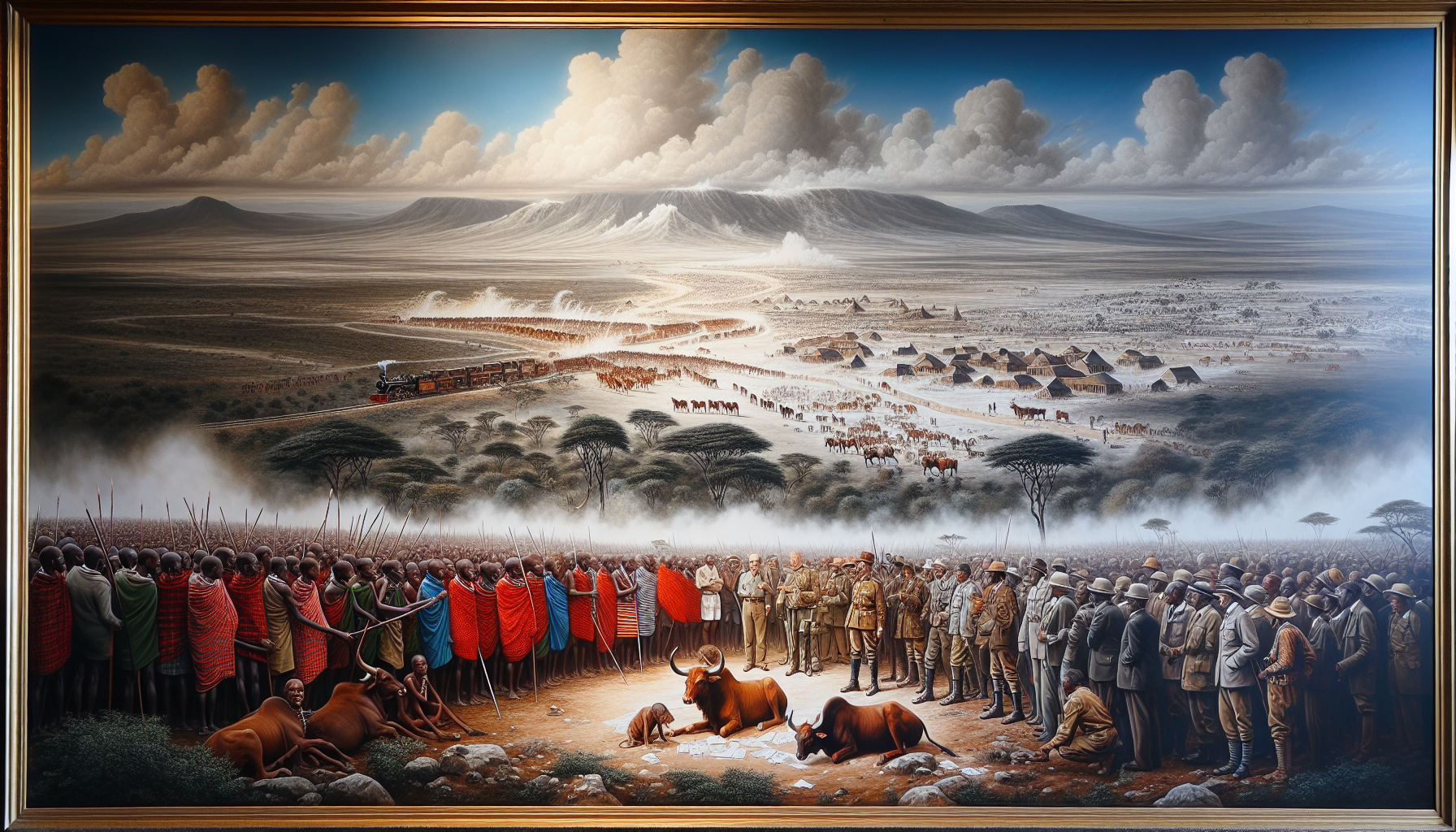
Table of Contents
- Introduction
- Colonization and Disruption of Traditional Life
- The Presence of Indians and the Hutt Tax
- The White Highlands and Land Allocation
- Political Movements and Resistance
- The Mau Mau Uprising
- The Capture of Jomo Kenyatta and the End of the Mau Mau
- Conclusion
- FAQ
Introduction
In the time before the arrival of outsiders and the beginning of recorded history, the Maasai, a people of nomadic cattle herders, began migrating southward from present-day Sudan and Ethiopia. They eventually settled in the Rift Valley region of Kenya and Tanzania, becoming the dominant tribe in the area. The Maasai were known for their fierce reputation as warriors and engaged in frequent raids, giving them a power beyond their numbers.
Colonization and Disruption of Traditional Life
In 1888, the British East African Company was granted a charter, which led to the colonization of present-day Kenya. While many indigenous groups were unable to resist colonization, the Maasai were one of the few that maintained some degree of autonomy. However, they eventually came under British rule and their traditional way of life was disrupted by the introduction of Western education, religion, and economic systems.
The British government took over administration of Kenya in 1904 and introduced forced labor and legislation that ensured natives became subjects of the British settlers. The Maasai struggled to preserve their territory, but their spears were no match for armed British troops. In 1904, they signed their first agreement, losing the best of their land to European settlers.
The Presence of Indians and the Hutt Tax
During the colonial era, the presence of Indians in Kenya grew significantly. The British brought Indians to Kenya as indentured laborers to work on the construction of the Uganda Railway. After the completion of the railway, many Indians chose to remain in Kenya and engage in various economic activities.
To consolidate power, the British introduced the Hutt tax, which required native Kenyans to earn money by working for someone else. Failure to pay the tax resulted in fines and forced labor, providing cheap labor for the British settlers.
The White Highlands and Land Allocation
In 1920, the British East Africa Protectorate was renamed Kenya and became a British colony. The British government introduced a new system of land tenure, known as the White Highlands scheme. This involved allocating land to European settlers at the expense of indigenous peoples.
The White Highlands became the focal point for European settlement in Kenya, displacing native inhabitants. European settlers owned more land than the indigenous communities, who were forced into reserves.
Political Movements and Resistance
As mistreatment and oppression under British rule continued, various Kenyan nationalist movements emerged. One of the first political pressure groups was the Young Kikuyu Association, formed in 1921. They demanded African representation in the legislature and raised concerns about low wages and restrictions on coffee growing by Africans.
The situation escalated after World War II, as frustration grew among Africans due to the lack of progress in improving their living conditions. This led to the emergence of the Mau Mau uprising, a secret society that aimed to reclaim their land and drive out the white man.
The Mau Mau Uprising
The Mau Mau, primarily composed of Kikuyu tribe members, resorted to violence to fight against colonial rule. They took an oath to fight for the land and freedom of their country, often resorting to assault and burning the homes of those who refused to take the oath.
As the conflict escalated, the British government deployed troops to Kenya, and a state of emergency was declared. The Mau Mau were labeled as terrorists, and anyone administering their oath faced the death penalty. The European community in Kenya lived in fear, and commando units were created to combat the Mau Mau threat.
The Capture of Jomo Kenyatta and the End of the Mau Mau
In 1956, British colonial police officer Ian Henderson successfully captured Jomo Kenyatta, the leader of the Mau Mau. Kenyatta was sentenced to seven years in prison, but the Mau Mau rebellion continued under the leadership of Field Marshal Musa Mwariama and General Baimungi.
After Kenya gained independence from Britain, the Kenya African National Union was organized, and Kenyatta was elected president. He led Kenya to independence in 1963 and is widely regarded as the Founding Father of the nation.
Conclusion
The history of Kenya is one of colonization, resistance, and eventual independence. The Maasai, the arrival of outsiders, and the disruption of traditional life laid the foundation for the Mau Mau uprising. Through perseverance and determination, Kenya achieved independence and began a new chapter in its history.
FAQ
Q: Who were the Maasai?
A: The Maasai were a people of nomadic cattle herders who migrated southward from present-day Sudan and Ethiopia, eventually settling in the Rift Valley region of Kenya and Tanzania. They became the dominant tribe in the area and were known for their fierce reputation as warriors.
Q: How did colonization disrupt the traditional way of life in Kenya?
A: Colonization introduced Western education, religion, and economic systems, disrupting the traditional way of life for indigenous communities. The Maasai, like many other tribes, struggled to preserve their territory and eventually came under British rule.
Q: What was the Mau Mau uprising?
A: The Mau Mau uprising was a resistance movement against British colonial rule in Kenya. The Mau Mau, primarily composed of Kikuyu tribe members, resorted to violence to reclaim their land and drive out the white man. The conflict resulted in a state of emergency and the deployment of British troops.
Q: Who was Jomo Kenyatta?
A: Jomo Kenyatta was a prominent figure in Kenyan history and the leader of the Kenya African National Union. He played a crucial role in Kenya's fight for independence and went on to become the country's first prime minister and later its president.
DR MISBAH ULLAH KHAN OFFICIAL

0 Comments